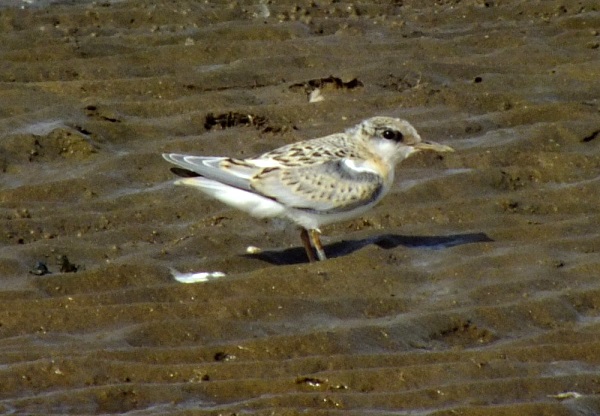Site menu:

June 2014 Newsletter
Little Terns at Gronant.
RSPB Burton Mere Wetlands and IMF.
May Bird News.
Forthcoming Events.
Latest Newsletter.
Little Terns at Gronant
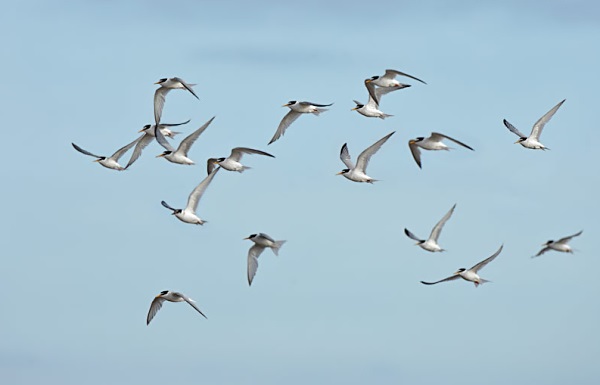
Remarkably, the number of Little Terns breeding at Gronant increased for the fifth year in a row to a new record high of 129 pairs in 2013. No doubt this increase has been fuelled by the seven out of eight very good breeding seasons they had between 2003 and 2010 when the annual average for the eight years was 101 pairs producing 137 fledged young. This correlation between breeding success and number of pairs two to four years down the line is interesting as terns are not supposed to be particularly site faithful but a look at the graph below does seem to indicate that young birds do return to breed here as well as the adults. Certainly, after three relatively poor breeding seasons we would expect a drop in the number of pairs this summer so we will see what happens with interest.
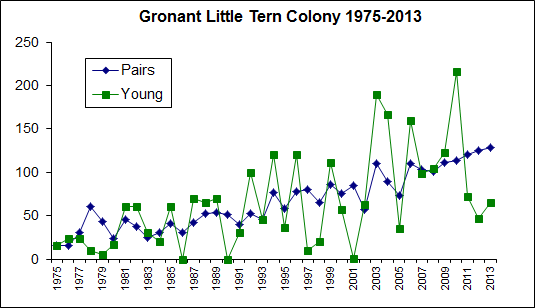
Compared with all those good breeding seasons the last three years have certainly been challenging with a mixture of the weather and predators being the main culprits for the low productivity. It was unfortunate in 2013 that unusually high spring tides in mid-June coincided with strong west winds and many nests were flooded out. In addition, it was thought that many chicks wandered out of the electrified pens at night and were taken by ground predators. Under the circumstances a minimum of 65 fledged young wasn't a bad total. Big year to year differences is the norm for Little Tern colonies, of course, so there is nothing too worrying about the recent dip in productivity - but a good vole year (so predators will eat voles and not terns!) with several weeks of light winds would certainly be very welcome this summer.
Recent Developments
The following two paragraphs are from Adrian Hibbert - Countryside Warden (North Denbighshire):
"The new successful LIFE+ partnership project between the RSPB, DCC and 7 other associated beneficiaries is an exciting prospect for the next 5 years that begun in September 2013. Over the period it should help improve our knowledge of little terns, their habitat and needs. One of the most important elements will be to educate and increase public awareness of the colony so to be able to sustain the little tern protection for future years and increase their value in terms of competing for space at new colonies. There is also an aim to increase joint working between conservation bodies and businesses to improve their protection."
"The flooding in the winter of
2013/14 has dramatically altered the shingle ridge and even the area of
dune behind. The suitable nesting habitat for little tern is much
narrower but the area behind where the new spit has been forming over
the last three years is in good shape. The hope for 2014 is that the
change has been positive; however the size of shingle at the
traditional western area of the colony does not seem suitable being so
large. This may restrict the colony to a perceived smaller area but on
the other hand it could be beneficial in terms of tidal loss being
reduced."
Wardening - Please Help!
Since 1975 this colony has been wardended, first by the RSPB and, since 2005, by Denbighshire Countryside Services. There is no doubt that without this wardening, much of it voluntary, this colony would have disappeared long ago. So please help if you can. Please ring Denbighshire Countryside Services on 01745 356197, or just turn up at Gronant and introduce yourself.
It is also a great place to do some bird watching - see my Gronant Site Guide for more details. Also Click Here, this link includes some details of what is expected of the Wardens.
VISTORS - PLEASE NOTE
Extract from Little Tern Report Gronant 2013:
"Birdwatchers and photographers assumed it was acceptable to stand right on the perimeter boundary on the seaward side of the pens. Why you would need to do so with a big telescope is difficult to understand? However one can understand their assumption that this is acceptable, but the perimeter fence on the beach is really far too close to the colony. It is difficult to manage this as tides would take away the perimeter posts if they were further out. To ensure minimal disturbance of the colony the entire beach should be closed off in front of the pens, however it is unlikely that this would acceptable to local authorities. Any people observed standing in front of the colony for more than 15 minutes were politely asked to move on. Most were fine with this once it was explained that they were disrupting the colony. Some weren’t!"
Sources of Information:
1. Dr Adam Britt, Ben Leece and Amber Jenkins, Little Tern Report
Gronant 2013,
Denbighshire County Council Countryside Services.
2. Graph showing Breeding Success of Gronant Little Tern
Colony
was originally supplied by RSPB and subsequently updated with data
from Denbighshire County Council Countryside Services.
3. Adrian Hibbert - Countryside Warden (North Denbighshire)
Richard Smith (Gronant Voluntary Warden).
After a long season of wardening it's always great to see these on the beach - Job done!
Top of Page
RSPB Burton Mere Wetlands and Inner Marsh Farm
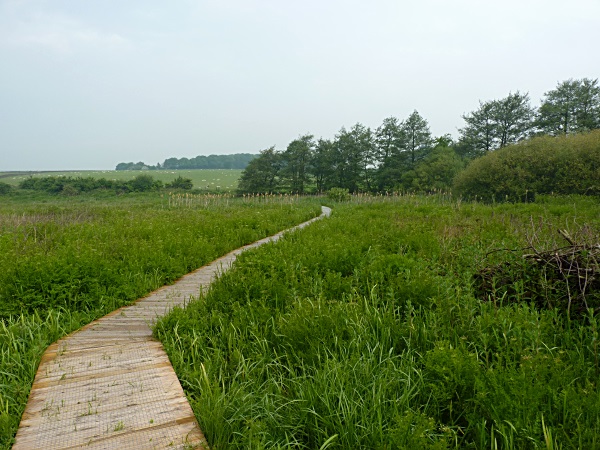
In recent weeks there have been some exciting developments at RSPB Burton Mere Wetlands (BMW) including the opening of the long-awaited trail linking the BMW reception hide area with the Inner Marsh Farm (IMF) hide. This means that the old IMF car park is now closed and the hide and adjacent trails are open at the same times as the rest of BMW, car parking for all the hides is at the BMW Reception Hide (accessed from Puddington Lane, Burton).
The Reed and Fen Trail, as it is called, is a very pleasant walk. If you don't stop to look at the birds and wild flowers, which I'm sure you will, it takes about 20 minutes to get to IMF. One place to stop is at a new screen which overlooks a pool that was previously largely hidden and it will be a great place to see a good selection of waders and wildfowl.
Once you get to the old IMF area you
can now take the Hillfort trail* over the railway, giving fabulous
views
over Burton Marsh. It should be an excellent spot to see Hen Harrier,
Short-eared Owls and Pink-footed Geese in the winter.
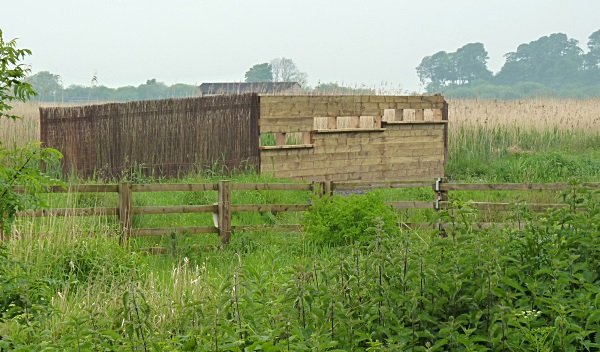
On the way from the Reception hide and before you get on to the new trail you will see the new Reed Bed Screen (above) giving good views over a new scrape and the extensive reed bed area.
For a map of all the trails at BMW and IMF download Trail Map. For more details about RSPB Burton Mere Wetlands Click Here.
* As I write this in early June the Hill Fort Trail is only accessible if you are a part of a Guided Walk. However, I'm told by the RSPB that the trail will be fully open within a few weeks.
Top of Page
May Bird News

These eiders (above) came unusually close in to Red Rocks, a great view. Five Velvet Scoters off Hilbre on the 17th was probably the highlight so far as sea watching was concerned but 8,500 Common Scoters on the same date was a fantastic count for mid-May, as was 1,500 Scoters at the end of the month when three Arctic skuas were also recorded. A Black Guillemot was another good Hilbre record, with one seen on the 27th. 200 Gannets were counted on a couple of days, always good to see.
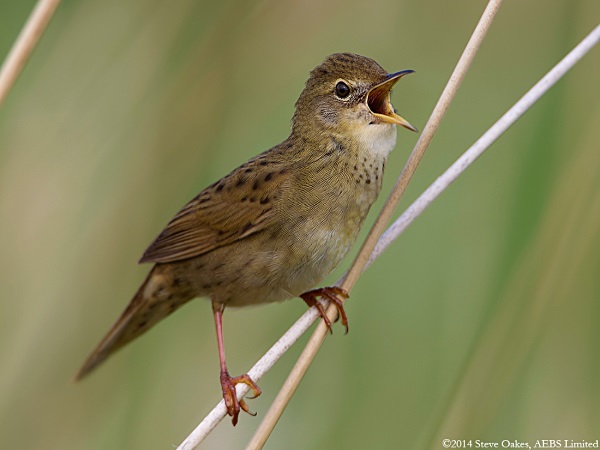
Migrants continued to come through for most of the month with the undoubted bird of the month a Citrine Wagtail at Red Rocks on the 5th, a first for Cheshire and Wirral. The first Swift was over Hilbre on the very late date of May 3rd and the first Spotted Flycatchers were at Leasowe Lighthouse on the 15th with 10 there by the 20th. A Wood Warbler was caught and ringed on Hilbre on the 20th. A pair of Garganey's were at Burton Mere Wetlands where a Red Kite flew over on the 18th which was also seen over Frankby on the same day. Incidentally, the escaped falconer's Red-tailed Hawk is still around the West Kirby area - and still being mis-identified as a Buzzard/Red Kite/Osprey.........
Red Rocks Update
I've not written an article this month as very little has happened, and certainly no consultation has taken place yet. See April and May Newsletters for previous articles. We may yet want help at Red Rocks if work re-starts in late summer trying to persuade Cheshire Wildlife Trust that they should be increasing bio-diversity at Red Rocks - not wantonly destroying it!Underground Coal Gasification and Fracking
An election leaflet on the above, which was pushed through my door recently, made me angry. Better not say too much other than please see my Article on UCG which, I believe, gives a more informed view on the subject.Fracking in our area is also very unlikely, but you may be interested in a Report recently written and co-authored by the RSPB, National Trust, WWT, Wildlife Trusts and others called 'Are we fit to frack?'. There are undoubtedly some genuine environmental concerns with fracking which are discussed in this report in an informed and non-hysterical manner (!):
see http://www.rspb.org.uk/news/details.aspx?id=365983 and Fit to Frack.
What to expect in June
Although numbers of waders are much lower than in the winter there are still some around and we sometimes get one of the largest over-summering flocks of Black-tailed Godwits in the country with up to 1,000. These are usually at Burton Mere Wetlands but last year they took to feeding off Caldy and West Kirby on the estuary. Small flocks of immature Knot can also be seen and these are often around Hilbre. But the waders we most look out for are those returning from breeding with Green Sandpipers and Spotted Redshanks usually the first to be seen, the latter looking glorious in their black breeding plumage. By the end of the month gull numbers will start to build up, these will be mostly Black-headed Gulls but we nearly always get a few Mediterranean Gulls in with them - Heswall, West Kirby and Hoylake are the best places to see these.
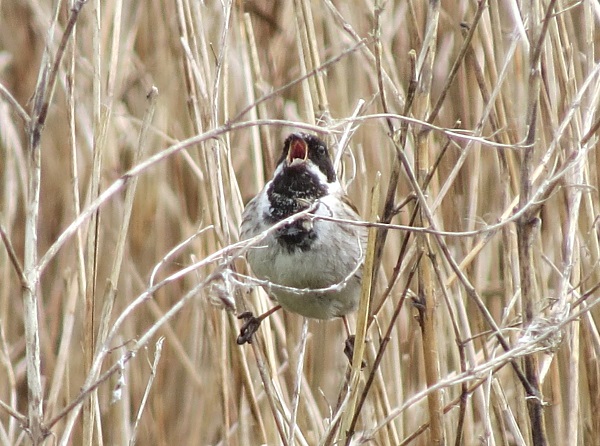
Top of Page
Forthcoming Events
June Highest Spring Tides (Liverpool)
Also
see Tides
page.
14th June, 12.41hrs (BST), 9.4m.
15th June, 13.29hrs (BST), 9.4m.
Forthcoming Events
Organised by the Wirral
Ranger Service , Flintshire
Countryside Service and the
RSPB (Dee Estuary):
All these events and walks have bird interest, even those not
advertised specifically for birdwatching. No need to book for these
events unless specified - please check below.
Also see 2014 Events Diary.
Price: £3 suggested donation per person
Booking essential
Join the Coastal Rangers and RSPB for an evening walk across the sands to Hilbre Island to discover its wildlife and history. Warm waterproof clothing, stout footwear or wellingtons are recommended. Bring binoculars if you have them. Places are limited and a suggested donation of £3.00 will be gratefully received on the day.
The island has two compost toilets, but no other amenities. There is ample free parking in West Kirby; the walk to the island is almost 2 miles in each direction, across wet sand and mud.
Booking essential (0151) 648 4371
Saturday 12th July, Sunset and Wildlife on Hilbre.
Price: £3 suggested donation per person
Booking essential
Join the Coastal Rangers and RSPB for an evening walk across the sands to Hilbre Island to discover its wildlife and history. Warm waterproof clothing, stout footwear or wellingtons are recommended. Bring binoculars if you have them. Places are limited and a suggested donation of £3.00 will be gratefully received on the day.
The island has two compost toilets, but no other amenities. There is ample free parking in West Kirby; the walk to the island is almost 2 miles in each direction, across wet sand and mud.
Booking essential (0151) 648 4371.
Saturday 26th July
The Big Sea Watch:
Join the Coastal Rangers, staff from the RSPB and Hilbre Bird Observatory for a day on Hilbre looking for seabirds, wading birds and cetaceans that inhabit our wonderful coast. We will be staying on Hilbre during high tide giving us the best chance to see them.
Places are limited with a suggested donation of £5:00 for this event.
For more information and to book your place please ring Wirral Country Park on (0151) 648 4371
